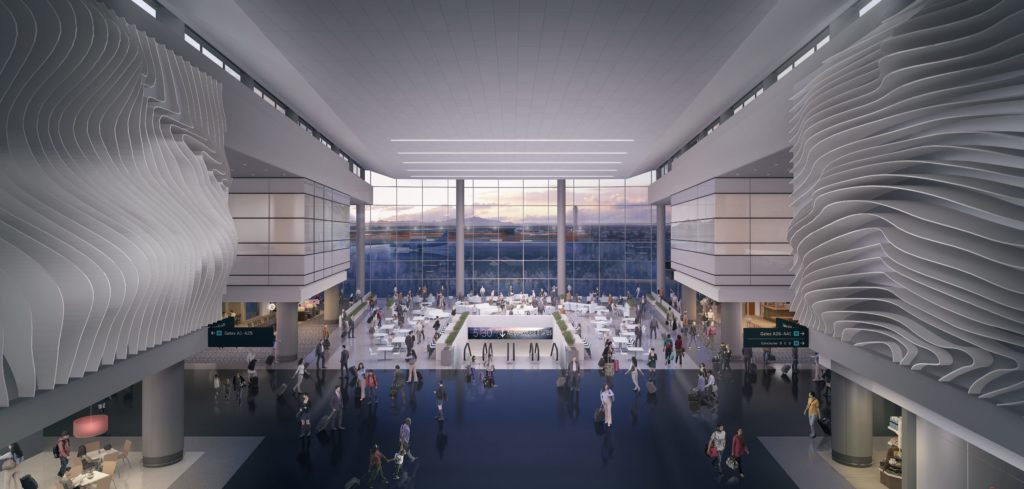The new Salt Lake City Airport in Utah has moved a step closer to opening with the official unveiling of the facility to media and invited guests on August 27. Due to be operational on September 15, the new terminal and associated infrastructure is replacing an installation originally constructed in the 1960s.
With the old airport serving twice as many passengers as it was originally designed for, there was a pressing need for a new development, and the airport operator says it has taken the opportunity to harness the latest in technology and thinking to maximize functionality.
For example, the parking facilities are designed to ease congestion. Not only are there double the number of parking spaces compared with the old airport, users can also download an app showing vacant spaces in real time. Further reducing delays, all the parking and rental car facilities are linked to the main terminal via walkways rather than pedestrian crossings, which impede traffic flow.
Looking to the terminal facilities, thought has been given to the passenger types using the terminal. Salt Lake City’s location means it welcomes many visitors for outdoor and winter sports holidays. With this in mind, the baggage carousels have been specified wider than standard, to accommodate equipment such as skis, snowboards and bicycles.
The airport also sees a large volume of returning service personnel and missionaries, who tend to be greeted by their families. To prevent those awaiting arrivals clogging up the baggage claim, the new airport includes a 400-person capacity greeting area, complete with comfortable seating and even a fireplace.
The airport also highlighted that at the core of the development project was a desire to create a facility that made an impact both architecturally and in terms of the vistas that Utah users could see from the terminal. In addition to the architectural design, undertaken by HOK Architects, the airport features a number of art installations created by artist Gordon Huether, who explained, “The prime objective from the start was to celebrate the natural beauty of Utah in a fully architecturally, integrated art program. The big idea is to blur the lines between art and architecture. If there was ever a time that art mattered, where art should transport you to a higher place, where art could unite us in inspiration, nature and beauty, this is that time.” These installations are complemented by large glass façades, which provide an uninterrupted view of the mountain ranges bordering the city.

